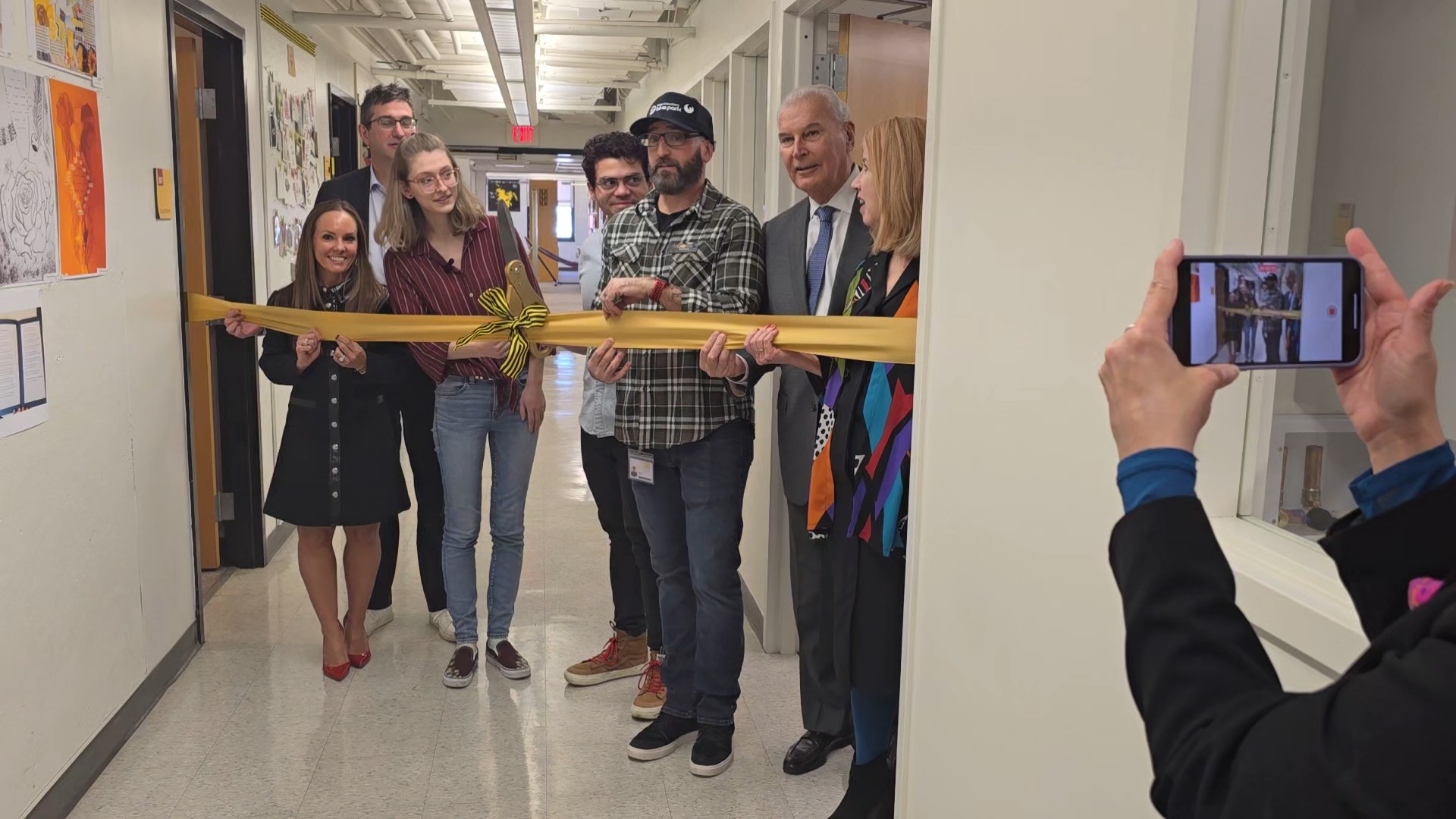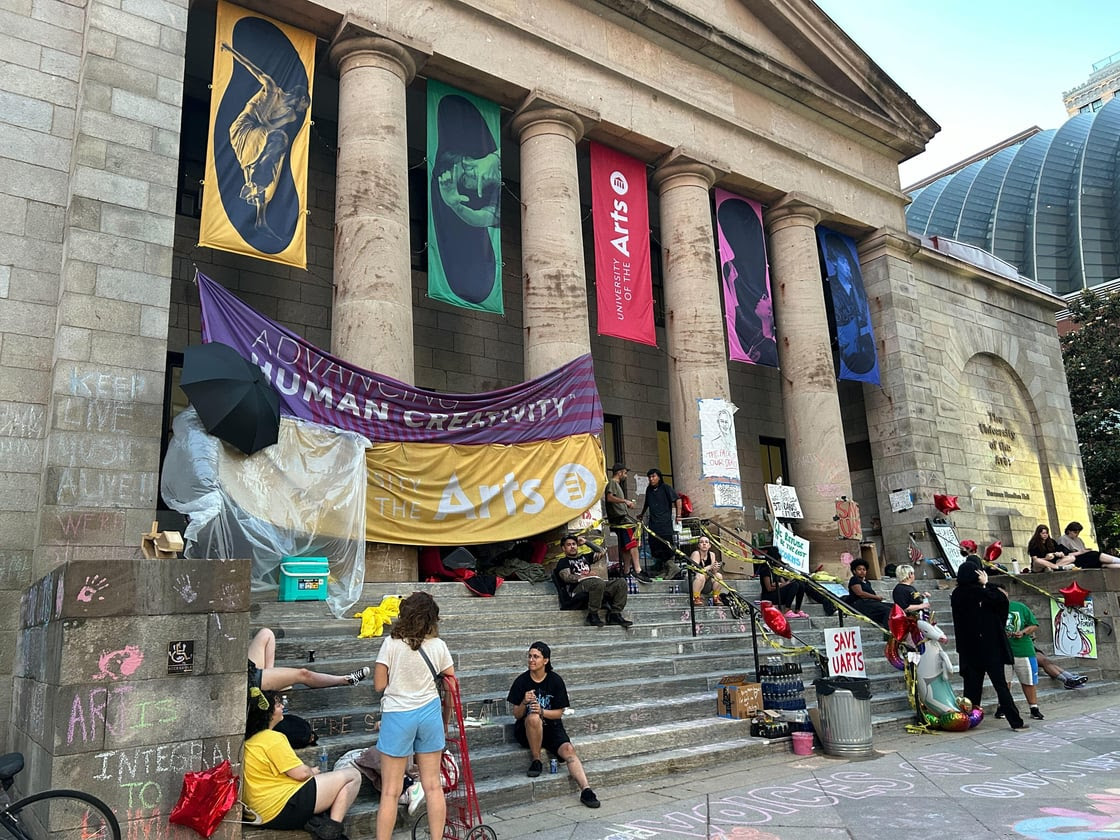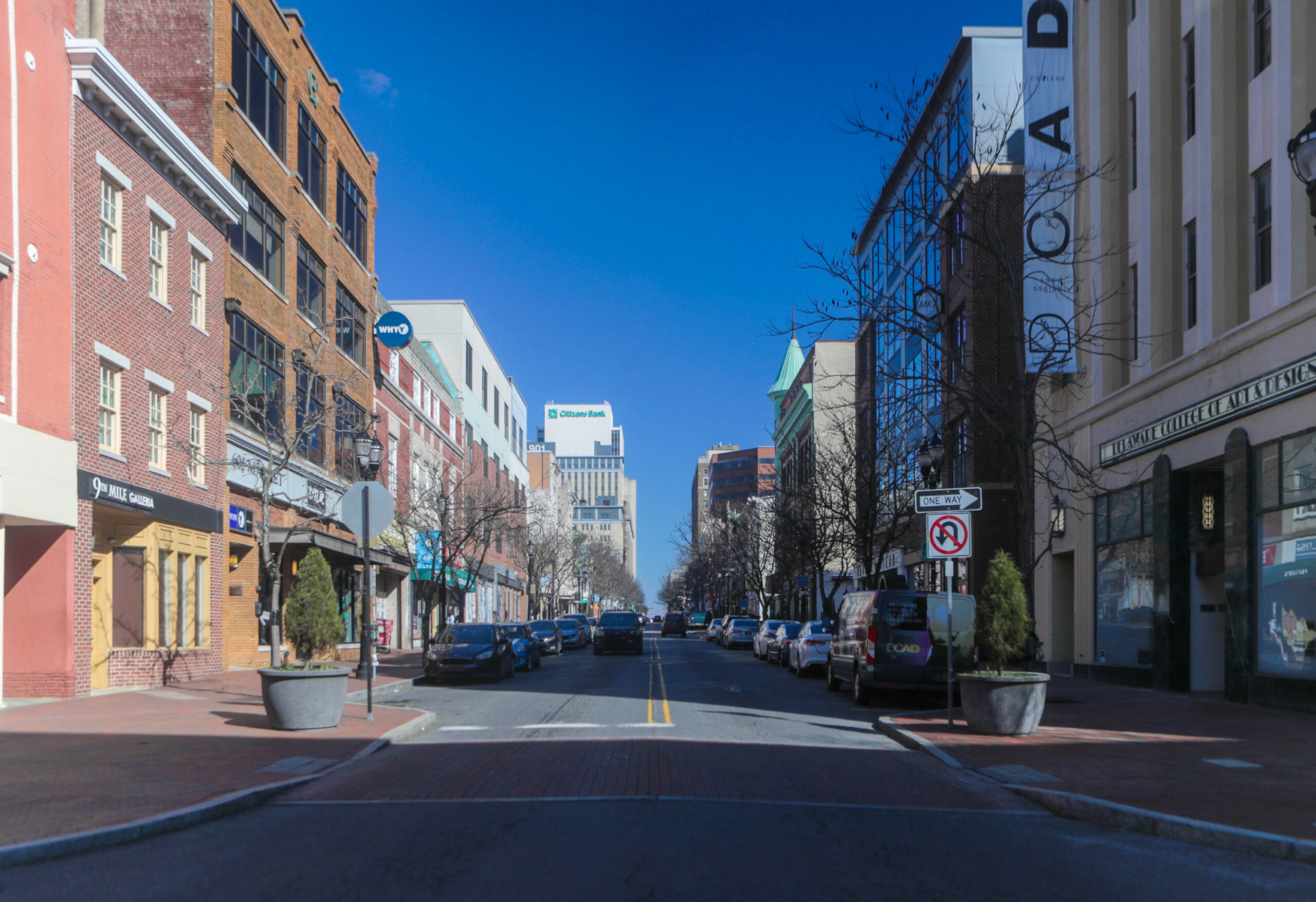When I saw the email that Delaware College of Art and Design was closing after 27 years, all I could think about was its technology center.
It felt like I had just been there, covering the opening of its new Crystal Trust-funded effort, along with local policymakers, business owners and educators celebrating a new chapter for the school.
It felt like we all fell for a ruse.

Not that it was a secret Delaware College of Art and Design wasn’t thriving. I’d heard stories, mostly off the record, for years. But there were also some things out in the open, like its dwindling enrollment and the sale of its dormitory.
Then, just a few days after DCAD’s shutdown announcement, University of the Arts in Philadelphia abruptly announced it was closing, too.
As an art school graduate myself — I attended Temple’s Tyler School of Art (now Tyler School of Art and Architecture) in the early ‘90s — these sudden and disruptive closures felt personal.
The full reasons behind the abrupt closures of two Mid-Atlantic art schools just days apart may not be known anytime soon. Neither responded to my request for an interview. Instead, I turned to other institutions, including my alma mater, to see if I could find out if art schools are in jeopardy, and how they can thrive.
Blame FAFSA?
As with DCAD, the UArts closure happened suddenly, leaving students and faculty in the lurch.

2022 UArts alum Ivy Nenkov, creator of the UArts Dumpster Fire project to raise money to support displaced faculty, told me via Instagram that students had concerns about the school spending money on what was considered by some to be unnecessary, including an on-campus coffee shop and a new gym.
I’d heard similar concerns about DCAD’s technology center from an alum who asked not to be named.
In a public letter, DCAD president Jean Dahlgren assigned much of the blame to the Free Application for Federal Student Aid (FAFSA).
Without a doubt, the FAFSA fiasco contributed to the situation. To recap, the 2023 rollout of a new form was so riddled with technical issues that it delayed colleges and universities from sending out aid packages to students, leaving both unsure if they were going to receive aid, well past the date the money was expected in hand.
But FAFSA, while consequential, is just part of what’s happening when it comes to art schools.
University-backed art schools have their advantages
Universities with art major programs and full art schools can take much bigger hits than small colleges, whether they’re art-focused or not.
“We really can’t underestimate the impact of COVID on disrupting education in general,” said Susan Cahan, dean of Temple University’s Tyler. “With art schools, physical, tactile, experiential learning is absolutely critical.”
Tyler students were lucky. The school remained open through almost the whole pandemic, thanks to a new building with a state-of-the-art ventilation system and large studios that allowed students to spread out. That wasn’t the norm, though; 85% of higher learning institutions moved to emergency remote classes in the fall of 2020.
Tyler has also evolved from what it was in the ‘90s when DCAD first opened.
When I attended Tyler, it was located on an old estate in Elkins Park, Pennsylvania, isolated from the city and pretty much everything else. It had a good graphic design department, but fine art students like myself weren’t learning to use technology in our art, even in the photo department.
Today, Tyler is located in North Philly, near Temple’s main campus, and in 2019 it added “architecture” to its name to reflect its main disciplines. The number of fine arts majors has declined, per Cahan, but now main campus students can take art classes easily, so enrollment remains stable.
The Pennsylvania Academy of the Fine Arts, also known as PAFA, another arts education program unaffiliated with a university, ended its degree-granting programming to re-focus on its collections and exhibitions in January.
Alfred University in Alfred, New York is a multi-discipline university with a school of art that has seen similar patterns. The availability of arts classes to the whole student body keeps them active.
Shortly after DCAD announced its closure, Alfred president Mark Zupan reached out to its displaced students offering an opportunity to attend with a match of DCAD’s tuition and aid.
Mixing arts with other disciplines is part of the model to keep the major self-sustaining.
“It’s wonderful to go to a fundamentals of dance performance at the end of the year, and half the football team is there,” Zupan said.
Proving the value of an arts education
University art schools and major programs may be more stable, but it’s not always easy, said Lori Crawford, the Program Director of Visual Arts at Delaware State University (DSU).
It’s wonderful to go to a fundamentals of dance performance at the end of the year, and half the football team is there.Alfred University president Mark Zupannull
“At bigger universities, art majors aren’t the same as psychology or chemistry majors, so we have to justify our value,” she said.
There remains a stigma that there is no future or money in the arts, even as the number of art-related jobs is booming. In Delaware alone, the nonprofit arts and culture industry generated $209.5 million in economic activity in 2022, according to the Delaware Division of the Arts’ Arts and Economic Prosperity 6 report. That’s an impact of 3,330 jobs.
The need to justify an art degree applies to parents and even some potential students, too.
We’re living in a time when one can spend 12 weeks in an intensive tech workforce development program and potentially come out with a $70,000 job offer. Why spend tens of thousands of dollars including weighty loans for art school when you can learn from working artists you can pick and choose on YouTube?
It’s a serious question.
On the one hand, if you want to do glassblowing or ceramics or textiles, you need a studio, special equipment and hands-on instructors. But what if your passion is digital art? Photography? Drawing?
Technology has impacted everything — including the potential viability of art schools, especially standalone art schools.
Art education and community beyond college
Artists do have non-college options that aren’t online. One is a makerspace like NextFab, though it has had its own struggles.

In 2017, Philadelphia-based NextFab opened its Wilmington location in the Creative District. It struggled through the pandemic and ultimately closed in 2023. Earlier this month, NextFab announced its South Philadelphia location was also closing, allowing it to focus its resources on its artisan community at its North Philadelphia location.
Melissa Guglielmo, director of programming at NextFab, is a UArts alum, as are many in the NextFab community.
“I built the North Philly location out with another fellow UArts alumni, the Resource Exchange executive director that we partnered with to move here is a UArts alumni,” Guglielmo said. “So much of the community around us are the alumni, so it is really disconcerting to see it just shutter.”
But NextFab’s South Philly closure was strategic, says Guglielmo. Its hard-tech prototype focus became less of a draw, while its more crafty artisan community grew.
Being a graduate of a traditional art school, Guglielmo knows the pain points of struggling artists.
“The reality is, I graduated with an insane amount of student loan debt,” said Guglielmo. “Having graduated from an art school program doesn’t give you business education. The echo you always hear is that they don’t teach you how to actually do it, to be an entrepreneur.”
To help mitigate that gap, NextFab offers an artisan accelerator program, funded by the Pennsylvania Department of Community & Economic Development Commerce Department.
NextFab is just one of many community art spaces in the region. Community art spaces like Black Hound Clay Studios and Yay Clay in Philly, or Rarehouse Studios and Bellefonte Arts in Delaware also offer artists the kind of networking opportunities that traditional art schools provide.
Artists won’t become business-minded by themselves
Some art schools, especially if they’re part of a university system, do offer opportunities to learn business. Alfred allows students to customize their art education to an uncommon degree.
“Students can earn a BFA [Bachelor of Fine Arts], and then we have a BFA Plus One, where students can do business one year,” said Lauren Lake, dean of Alfred’s School of Art and Design. “They also can do a minor in business, or they can do a dual major in art and business.”
Adapting to changing demands, including the integration of business and embracing technology, helps keep art schools and institutions thriving, said Jessica Ball, director of the Delaware Division of the Arts.
Ball’s strategies for art schools also include focusing on financial stability, sound governance and training, advocacy, community engagement and promoting inclusivity and diversity.
Building a diverse student body is a necessity
Inclusivity and diversity were cited as a priority by every institution I talked to — an indication that the art school world is breaking from the stereotype of predominantly white institutions with little interest in diversity.
“Art school traditionally attracted wealthy white people,” said DSU’s Crawford. “Even though DCAD was in Wilmington, I think community-wise people were still in the mindset of, this is for others.”
After all, the fine arts market is still one that values exclusivity. Even as progress is made, those old gatekeeping habits still exist.
For the art schools that are thriving, that is changing. It has to, not just because diversity means more potential students, but because arts education is about more than art.
“It’s not just about having a bunch of people from different racial or ethnic backgrounds coming together in school, it’s also the cultural literacy of the professors and the breadth of discourse that happens,” said Tyler Dean Cahan. “I really do think that if we don’t make deliberate efforts to learn about the multiplicity of cultures that we are part of, we’re looking backward, and education is, by definition, about the future.”
So, what’s next?
UArts has been hit with a lawsuit from the union representing faculty and staff members for failing to give 60 days notice. This is on top of a student class action lawsuit against UArts. As of the time of this writing, no DCAD lawsuits have been filed, as displaced students make new plans for the upcoming school year.
“[Artists] are the folks who are problem solvers,” DSU’s Crawford said. “We’re good at problem-solving, and we need these skills in all aspects of society. So, I think we need to shout more about how society is much better when there’s art.”







